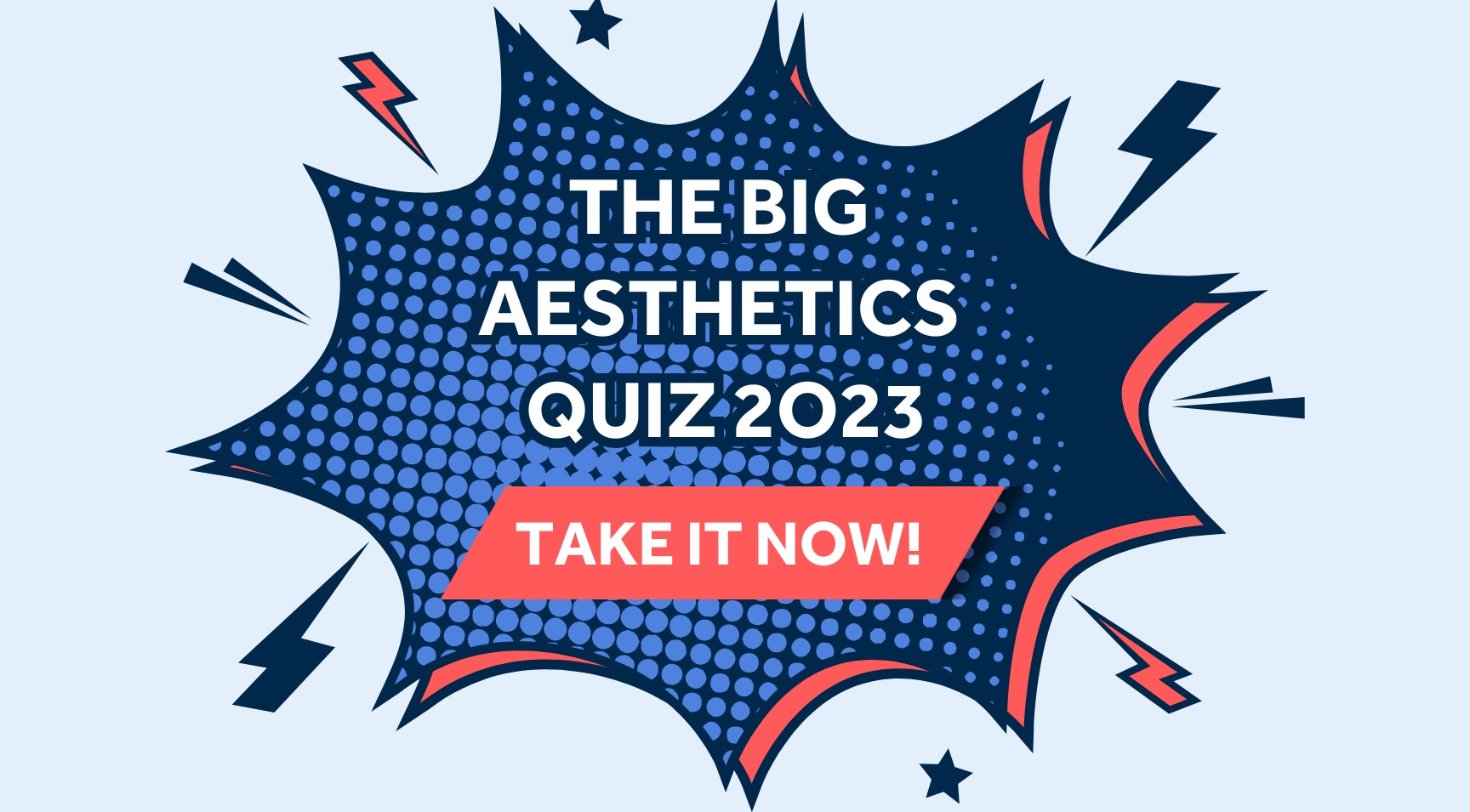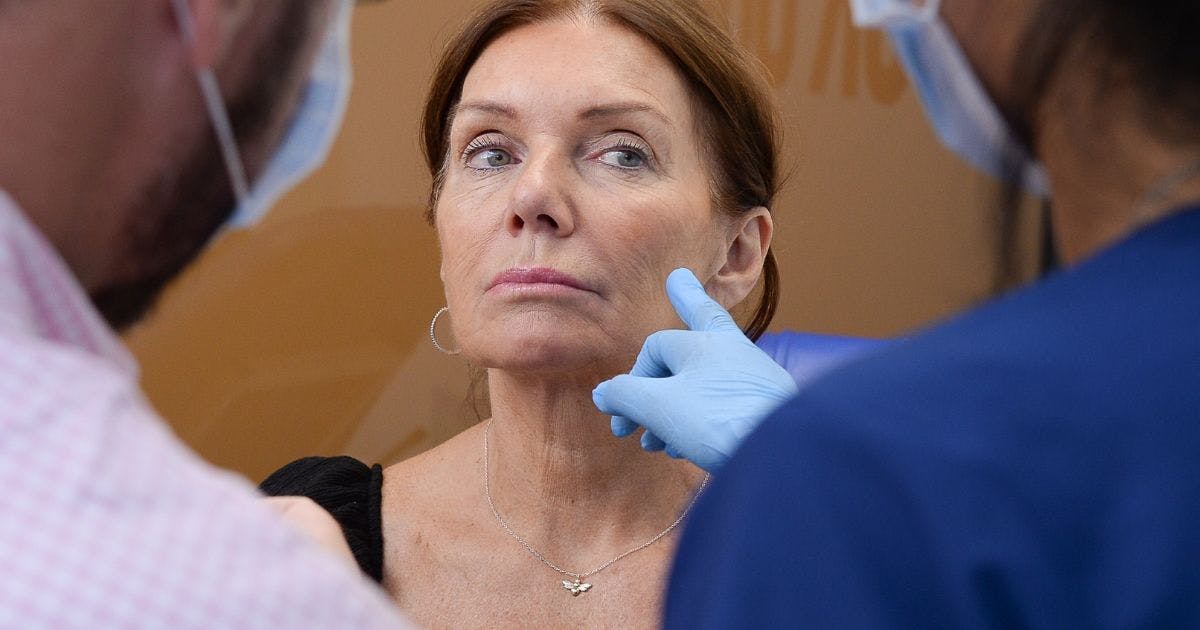The Big Aesthetics Quiz 2023

As another year comes to an end, what better way to round it off than with our Big Aesthetics Quiz?
Have you been paying attention to the articles we’ve been posting this past year? Put your medical aesthetics knowledge to the test…
You’ll find the answers at the end… Let us know how you get on over on the Harley Academy Instagram account!
Let’s get started!
1. Which of the following antibiotics does not affect botox action?
Aminoglycosides
Amoxicillin
Fluoroquinolones
2. For a contoured look that highlights the cheekbones, which area of the cheek would you predominantly treat?
Medial cheek
Lateral cheek
Cheek apex
3. Which facial layer do you typically use the cross-hatching technique in?
Two, superficial fat
Four, muscle and SMAS
Five, bone
4. Is this statement true or false, “Eyebrow ptosis is a more common complication than upper eyelid ptosis”?
True
False
5. Which of the following is not accurate aftercare advice for botox?
Avoid the use of saunas
Avoid touching the area
Avoid high-sugar and fatty foods for 24 hours
6. This year the government released its first wave of proposals for aesthetics regulation in England. Which one of these aspects was not covered in this initial proposition?
A) Introducing a licensing scheme for aesthetics practitioners
B) Stricter regulation of dermal fillers by the MHRA
C) A mandatory minimum level of qualification for aesthetics practitioner
7. Which of these titles do we recommend you do not use once you’ve completed our Cosmetic Dermatology training?
A) Skincare practitioner
B) Cosmetic dermatologist
C) Skin practitioner
8. When managing filler complications in patients with skin of colour, which part of the consultation and treatment process is most crucial?
History of keloid scarring
Injecting technique
Product selection
9. Which of the following are common concerns after tear trough filler injections? (select two)
Bruising
Oedema
Infection
10. If a lip filler patient has a scar on their lip, it’s best to use a cannula -
True
False

Answers (don’t look before you’ve finished!)
Find out how you did below…
1. Correct answer: B) Amoxicillin
When aesthetics patients take antibiotics its important to consider if they are contraindicated or will affect the result. This is a frequently asked question. These medications are commonly prescribed in the UK for conditions such as chest infections. However, amoxicillin does not affect botox function, so is not contraindicated for botox injections.
2. Correct answer: B) Lateral cheek
Treating the lateral cheek can help to contour the lateral face and cheeks. It can also be used to add high definition to the cheekbones, providing a “sculpted” look.
3. Correct answer: A) Two
Less popular than other techniques, the cross-hatch is usually used to treat the oral commissure or marionette lines in layer two, the superficial fat.
4. Correct answer: A) True
The frontalis raises the eyebrows for daily visual function. This can make patients who get forehead botox more prone to eyebrow ptosis if they have risk factors such as hyperdynamic frontalis action. Eyelid ptosis is much less common in comparison.
5. Correct answer: C) Avoid high-sugar and fatty foods for 24 hours
Contrary to some advice which has claimed the food you eat impacts the longevity of your injectable treatments, there is no evidence-based research to back this. As such, it does not make our list of solid aftercare advice for aesthetics patients!
6. Correct answer: C) A mandatory minimum level of qualification for aesthetics practitioners
A compulsory qualification in aesthetic medicine is expected to be announced in 2024. As such, it was not included in the government’s September 2023 proposals for regulating the non-surgical cosmetic sector. Find out more about this, including what it means for anyone considering a new career in medical aesthetics in our article detailing the new aesthetics licensing scheme proposals.
7. Correct answer: B) Cosmetic dermatologist
Patients largely do not understand the difference between a dermatologist and cosmetic dermatology services. Therefore, we believe it can be seen as misleading and unethical to use this title. Check out our article on whether you should call yourself a cosmetic dermatologist and form your own opinion!
8. Correct answer: A) History of keloid scarring
Every part of the treatment is exceptionally important and should always be tailored to your patient’s unique situation. This is true of all patient cohorts. However, when treating patients with skin of colour, a history of keloid scarring slightly increases the risk of scarring with injectable treatment.
9. Correct answer: A) Bruising & B) Oedema
Bruising and oedema can occur commonly after tear trough treatments due to the anatomical considerations of the area. Product selection and use at the appropriate depth is key. Infection is rare if an aseptic non-touch technique is used.
10. Correct answer: B) False
Using a cannula when a scar is present can be difficult. It could also lead to potential excessive trauma to the tissue as it’s being pushed through fibrous scars. As such, it’s better to use a needle when treating lip filler patients who have scarring in this area.
Sharpen up your medical aesthetics knowledge for 2024!
So, how did you get on..? If you got eight or fewer answers correct, we highly recommend swotting up by reading through our Aesthetic Medicine Articles over the holiday period!
Are you a doctor, dentist, nurse or clinical pharmacist considering a new full- or part-time aesthetics career for 2024? Let us help you to get a head start on your New Year’s resolutions!
Download our newest Prospectus to find out about our range of aesthetic medicine training and cosmetic dermatology courses.
If you have any questions, or if you just want to speak to someone who can provide guidance on which aesthetics courses best fit your goals, book a call with our Courses Advisors. They’ll listen to your goals and give you tailored advice on what the best aesthetics education pathway looks like for you.
All information correct at the time of publication
Download our full prospectus
Browse all our injectables, dermal fillers and cosmetic dermatology courses in one document
By submitting this form, you agree to receive marketing about our products, events, promotions and exclusive content. Consent is not a condition of purchase, and no purchase is necessary. Message frequency varies. View our Privacy Policy and Terms & Conditions
Attend our FREE open evening
If you're not sure which course is right for you, let us help
Join us online or in-person at our free open evening to learn more
Our Partners














STAY INFORMED
Sign up to receive industry news, careers advice, special offers and information on Harley Academy courses and services

